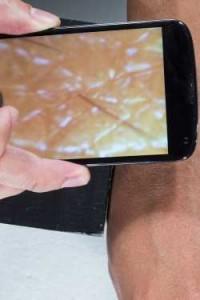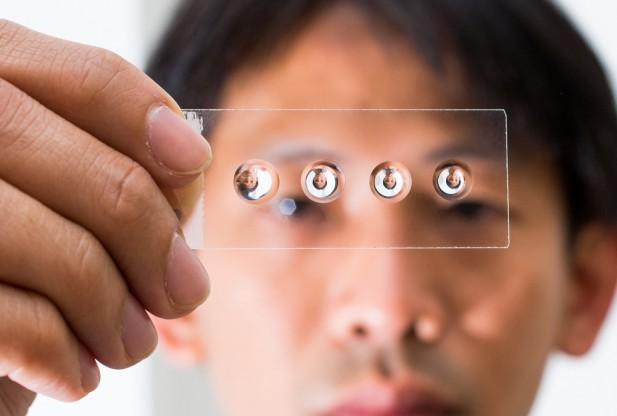Every day researchers are finding new ways to utilize the wonders of 3D printing to bring about substantial change within various medical fields. The majority of 3D printing applications in the medical field have been  related to prosthetic devices, 3d printed organ models, and even the 3D printing of actual human tissue.
related to prosthetic devices, 3d printed organ models, and even the 3D printing of actual human tissue.
This latest discovery, by Australian National University (ANU) researchers, strays from the typical applications above. They have used a 3D printer to create a tiny microscope lens, which can be used for the detection of skin diseases, such as melanoma, and other forms of cancer. A typical dermascope which is common in any office of a dermatologist, costs roughly $300. The researchers were able to print this lens for approximately $0.01. The lens is then attached to the camera of a smartphone or tablet. In this case they used a Nexus 4 Android based phone, along with a tiny battery, and two LEDs. The total cost of the setup was approximately $3.35. As the relatively simple installation of the setup is perfected, doctors will easily be able to attach this device to their iPad or other tablet. Applications could then be developed which could analyze the magnified images, providing a more accurate diagnosis on spot.
The researchers used the idea that a droplet of water can bend light and magnify objects which they are close to. They decided to try and mimic the water drop characteristics, using a gel-like polymer substance called polydimethylsiloxane (PDMS). They were able to eject drops of the PDMS out of a 3D printer, and onto a microscope glass. They then baked the substance at 70 degrees Celsius until it hardened. Once hardened, they repeated the process one more time; this time flipping the glass after the PDMS is added, and allowing gravity to form it into a perfect parabola.
“What I did was to systematically fine-tune the curvature that’s formed by a simple droplet with the help of gravity, and without any molds. It’s a low cost and easy lens-making recipe. I’m really excited that it opens up lens fabrication technology.” stated Steve Lee from ANU’s Research School of Engineering.
Every year, tens of thousands of cases of skin cancer go undetected, especially in developing countries. Although the magnification of about 160X is quite impressive for these 3D printed lenses, they do not have as good a resolution as those used by dermatologists today. Having said this, there could be numerous applications for such lenses in developing nations that are incapable of footing the bill for a typical dermascope device.
The researchers are looking to commercialize their 3D printed lenses, making them available sometime this year. Discuss this accomplishment at the 3DPB forum thread. (Image credit: Stuart Hay)
Subscribe to Our Email Newsletter
Stay up-to-date on all the latest news from the 3D printing industry and receive information and offers from third party vendors.
You May Also Like
Gorilla Sports GE’s First 3D Printed Titanium Cast
How do you help a gorilla with a broken arm? Sounds like the start of a bad joke a zookeeper might tell, but it’s an actual dilemma recently faced by...
Nylon 3D Printed Parts Made More Functional with Coatings & Colors
Parts 3D printed from polyamide (PA, Nylon) 12 using powder bed fusion (PBF) are a mainstay in the additive manufacturing (AM) industry. While post-finishing processes have improved the porosity of...
$25M to Back Sintavia’s Largest Expansion of Metal 3D Printing Capacity Since 2019
Sintavia, the digital manufacturing company specializing in mission-critical parts for strategic sectors, announced a $25 million investment to increase its production capacity, the largest expansion to its operations since 2019....
Velo3D Initiates Public Offering in a Bid to Strengthen Financial Foundations and Drive Future Growth
Velo3D (NYSE: VLD) has been among a number of publicly traded 3D printing firms that have attempted to weather the current macroeconomic climate. After posting a challenging financial report for 2023,...
































